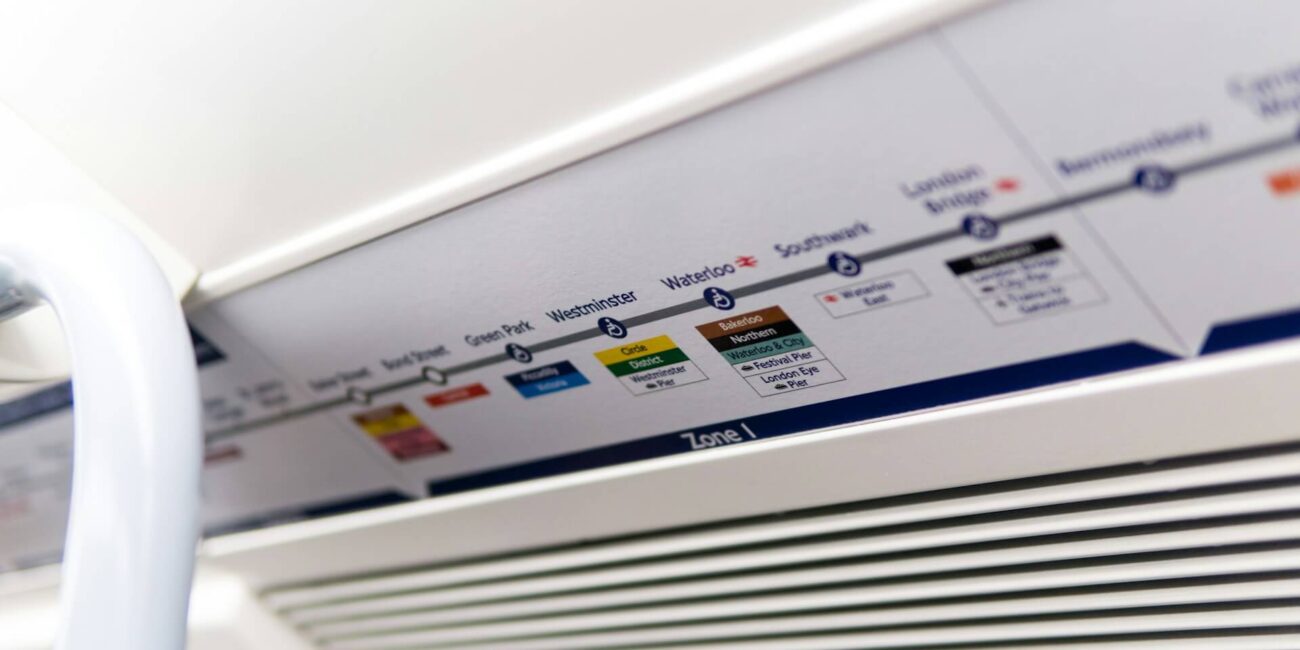Sweltering heat can make catching a break quite challenging, especially if your air conditioning system isn’t up to the task. If you’re interested in energy efficiency and a comfortable living environment, finding the perfect cooling solution is undoubtedly a top priority.
Fortunately, this thorough guide takes a close look at the cutting-edge air conditioning technologies that are shaping the notion of comfort, efficiency, and sustainability.
From Variable Refrigerant Flow (VRF) systems to smart thermostats and specialized air quality sensors, we’ll cover it all. By the end, you’ll have the knowledge you need to make well-informed decisions about how to enhance your home’s cooling experience.
The Rise of Variable Refrigerant Flow Systems
Are you tired of the constant noise and limited temperature control of your current air conditioning unit? It’s time to upgrade to the Variable Refrigerant Flow (VRF) system.
This innovative technology has been around since the 1980s and has been steadily gaining popularity around the world. With its advanced energy efficiency and precise temperature control, the VRF system is an excellent investment for anyone looking to improve their indoor air quality.
How VRF Technology Works
Are you tired of constantly adjusting the temperature in your building to try to achieve the perfect comfort level? Look no further than the VRF system.
Using refrigerant as a cooling agent and variable-speed compressors, this technology can provide precise temperature regulation for different zones within a building. By adjusting the flow of the refrigerant based on heating and cooling demands, the VRF system delivers unparalleled comfort and energy savings.
The Benefits of VRF Over Traditional HVAC
If you’re in the market for a new HVAC system, it’s worth considering the benefits of VRF technology. Compared to traditional systems, VRF can offer numerous advantages. For one, it can simultaneously regulate the temperature in different areas of your home.
This means that every room can be comfortable, no matter the season. What’s more, VRF doesn’t require any bulky ductwork, making it a top choice for retrofitting older homes. This not only saves space but also saves you money on installation costs.
Furthermore, with its quiet operation and energy-efficient performance, VRF is a smart investment that can save you up to 40% on energy costs. Sound too good to be true? It’s not. Learn more today!
Smart Thermostats and the Art of Room-by-Room Control
Have you ever stopped to think about the unsung hero of your home’s climate control? The thermostat may not get the recognition it deserves, but it’s a crucial element in keeping your indoor environment comfortable and cozy.
With the latest advancements in smart technology, modern thermostats have been reinvented. No longer limited to a simple on/off switch or basic temperature settings, these devices allow you to have complete control over your heating and cooling systems from the convenience of your smartphone.
It’s time to give the thermostat the recognition it deserves and learn more about the amazing capabilities of these modern devices.
The Evolution of Home Thermostats
Thermostats have undergone a massive evolution since their creation, advancing from simple dials to smart technologies that exceed our wildest expectations.
Today, we have smart thermostats, such as the Nest and Ecobee, that are capable of learning our habits, diligently monitoring occupancy patterns, and even being controlled remotely through our smartphones.
These advanced features ensure that we can enjoy maximum comfort while using energy efficiently, ultimately reducing costs in the long run.
The Advantages of Smart Thermostats
Have you ever considered the benefits of upgrading your home’s thermostat? Smart thermostats are becoming increasingly popular for good reason.
Not only do they offer the convenience of remote access and scheduling, but they can also provide significant energy savings thanks to their AI and machine learning capabilities.
The Silent Soldier – Modern Duct Systems
When it comes to air conditioning, the world of HVAC has seen numerous technological advancements. One such development that has been gaining traction lately is the rise of VRF systems.
With their ability to cool rooms without the need for ductwork, these systems have made a name for themselves as a smart and efficient option. However, we must not disregard the benefits of modern duct systems.
Thanks to industry advancements, today’s ducts are built with better insulation and a reduced likelihood of leaks. It’s no wonder they’re making a quiet revolution in cooling comfort.
Flexible Ducts for a Flexible Home
If you have an older home, you may be all too familiar with the issues that come with outdated duct systems. Not only can they be inflexible, but they are often inefficient and can lead to poor airflow and temperature control.
The good news is that modern homes now have access to high-quality, tangle-resistant flexible ducts that can bring significant improvements without costly renovations.
With these ducts, you can optimize airflow to rooms and spaces, resulting in a comfortable environment that suits your needs.
Harnessing the Power of Solar Air Conditioning
It’s important to keep an eye out for eco-friendly solutions to everyday problems. One such solution comes in the form of solar air conditioning systems.
By harnessing the power of the sun, these systems offer a compelling alternative to traditional cooling methods that rely on fossil fuels and other nonrenewable resources.
If you’re interested in learning more about solar air conditioning and how it can benefit both the environment and your wallet, be sure to do your research and see if this forward-thinking technology is right for you.
Photovoltaic Cooling and Its Benefits
Look no further than solar air conditioning! With photovoltaic cells that convert solar energy into electricity, you can harness the power of the sun to keep your home cool and comfortable while reducing your energy bills and carbon footprint.
By choosing to utilize this renewable energy source, you can do your part for the planet while enjoying the benefits of a more sustainable home.
Integrating Photovoltaics Into Existing Systems
As temperatures continue to rise, traditional air conditioning systems can quickly become a costly burden on homeowners. And so, many are turning towards the promising solution of solar air conditioning systems.
But, while this technology is becoming more accessible, there is still a level of uncertainty surrounding how it can be integrated into pre-existing setups. Fortunately, there is a clever solution – hybrid systems.
By using both solar energy and electricity from the grid, homeowners can make the transition toward a sustainable and cost-effective cooling solution without having to make any major changes to their current setup.
Interested in learning more about how you can make the switch? Let’s dive deeper into the benefits and mechanics of hybrid solar air conditioning.
The IoT and Air Conditioning — A Symbiotic Relationship
The Internet of Things (IoT) has revolutionized the way we interact with the world around us, and air conditioning is no exception. IoT-enabled AC systems have completely transformed the way we control the temperature in our homes and offices.
With the ability to connect to a larger ecosystem, these systems offer peak performance and unmatched convenience. Being part of this larger ecosystem is not just about controlling the temperature but also unlocking the full potential of your AC system.
Connectivity Through Smart Devices and AI
As technology continues to evolve, the Internet of Things (IoT) has taken the world by storm. With the latest IoT advancements, even air conditioning units can be connected to the internet, allowing us to monitor and control them remotely.
What’s even more fascinating is that AI algorithms can analyze usage patterns and environmental conditions to make real-time adjustments for optimal comfort and efficiency.
This technology means that we no longer have to worry about leaving the AC on all day or wasting energy unnecessarily. Instead, we can be assured that our homes or buildings are being well-attended to even when we’re away.
Creating a Smart Home Environment
The world of IoT is constantly evolving, and it’s more than just smart air-conditioning units. The sensors that monitor air quality and humidity, the shades that adjust automatically to block out the sun’s heat, and the interconnected ecosystem that simplifies your life are all part of the equation.
In a fully realized smart home, the air conditioning system is just one part of the puzzle, but an important one nonetheless.
The Importance of Air Quality Sensors
Modern air conditioning has come a long way from just keeping us cool on a hot day. With advanced air quality sensors, it’s now possible to keep our indoor environment clean and healthy as well.
These sensors are built into high-tech cooling systems, allowing us to receive alerts when it’s time to crack open a window or turn on the purifier. As a result, you can breathe easily knowing that you’re surrounded by fresh and healthy air.
Detecting and Dealing With Airborne Contaminants
They help monitor levels of particulate matter, volatile organic compounds, and carbon dioxide, among other things and can trigger smart actions if those levels exceed safe thresholds.
By providing real-time data, these sensors enable people to take action to improve air quality, such as increasing ventilation or turning on an air purifier. If you’re interested in learning more about this technology and its benefits, there’s no better time to start exploring.
The Health Implications of Clean Air
Indoor air quality is something that we all need to take seriously, no matter how clean we think our homes may be.
The truth is, that poor indoor air quality can lead to a range of health issues, none of which are very pleasant. From respiratory problems to weakened immunity, there’s no shortage of negative consequences that can arise from neglecting air quality.
Conclusion — Cooling the Future
State-of-the-art air conditioning solutions have revolutionized the way we think about home comfort. With a wide range of options available, including VRF systems that cater to your every requirement and sustainable solar-powered units, upgrading or planning your new system can reduce both your environmental impact and energy bills.
By taking time to discover what’s available, you can make the cooling season a refreshing and forward-thinking experience for your home. It’s not just about the technology, though. It’s also about creating your very own personal oasis that’s aligned with your values and lifestyle.



